#backpacking trip in yosemite
Explore tagged Tumblr posts
Text
Explore the world with confidence with a comprehensive Backpacking guide for beginners at www.theeagertraveler.com. Find essential travel tips, gear recommendations, and expert insights to start your amazing backpacking adventure.
#backpacking guide for beginners#backpacking southeast asia#backpacking trip in yosemite#world travel guide#europe travel blog#travel destinations#best travel blogs#destination guide santa maria valley#best vacation destinations
0 notes
Text
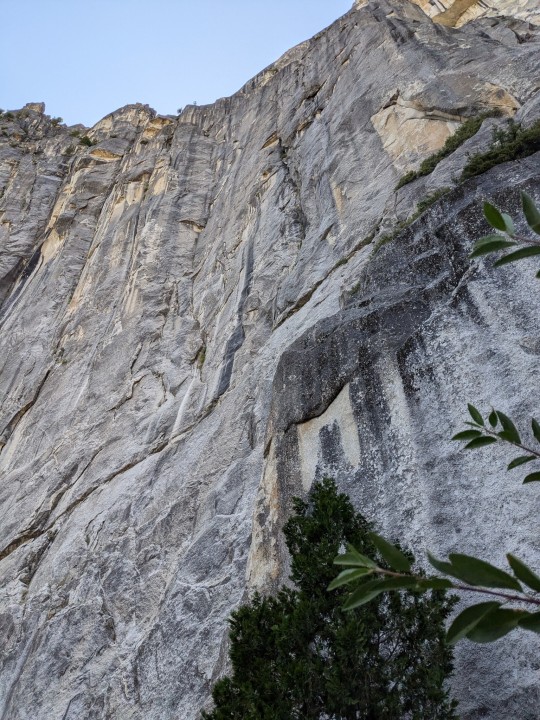


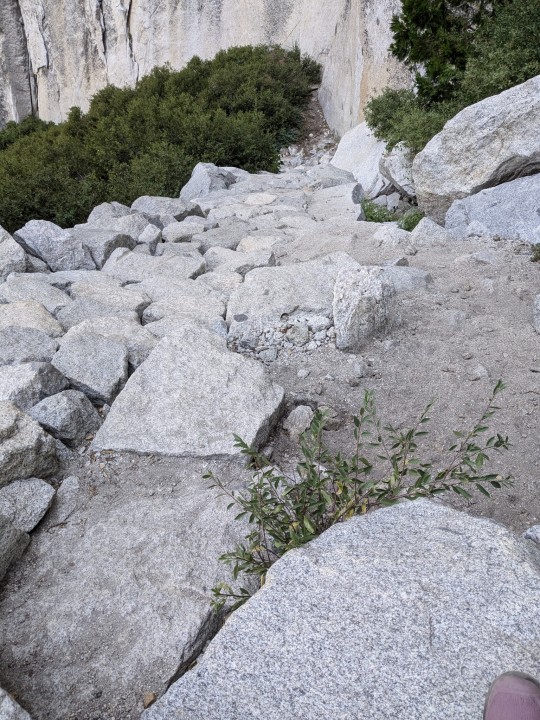
7.9.2024.
📍 Upper Yosemite Falls
9.25 miles -- 3,300 ft elevation gain
First of all, nothing in this trip went as planned 😆 Road closures, longer travel times, my friends are mother and son so they argued (maybe I should've expected that), phone service giving out, Airbnb was probably haunted, and so much more. My husband also shared his cold with me and that popped up day one, cuz, of course it did.
Truth be told I struggled hard on this hike. It is granite stairs that go straight up the entire way. We started way later in the day than planned so it was already 100*. I should've hydrated better the day prior so I was playing catch up. DayQuil helped a little, but I just couldn't breathe very well so I had to rest A LOT more than I typically do. I was annoyed with myself.
We made it to the top and climbed down the stairs to the top of the Falls lookout, which was amazing! It really is such a gorgeous place. There are pools at the top of the Falls and I totally got in. The whole way, I didn't even care if that meant I was hiking down in wet clothes, lol. It was definitely worth it to cool my body down.
On our way down we ran into a family we'd leapfrogged a couple times throughout the hike. (The mom had backpacked her 3 year old the entire way up the mountain. She was badass, man.) She, unfortunately, twisted her ankle on the way down the trail. She didn't have poles so I let her use mine. Her husband refused Search and Rescue help so we stayed with them the entire trip down the mountain. It took longer going back down than my turtle self took going up and we got back to the car at 11 pm 🤦
It was a challenging day for me and my brain and my body. I knew I was capable of completing the hike, but I definitely underestimated how being sick combined with the elevation would have on me, that's for sure.
70 notes
·
View notes
Note
I’m in Yosemite help me
Here's my tip: If you take the mirror lake trail past the lake itself back towards Snow Creek falls, there's a little slice of Tenaya creek that's very swimmable or wadable, not crowded, very accessible from the main transit loop via a mostly flat trail, and has an extremely up close view of the North Face of half dome from DIRECTLY under it.

I found the spot a couple years ago, and took a long siesta there during my valley pass-through on my backpacking trip in June, before reentering the wilderness via Snow Creek falls.
Don't ruin it for me.
34 notes
·
View notes
Text
inspired by a series of convos in the 3zun server and also my own recent camping trip:
please imagine mundane modern au nieyao going camping
meng yao is like twenty-three, freshly graduated from college after having to take a gap year to take care of his ailing mother. nie mingjue is in his thirties, and knows meng yao as the responsible young man who befriended his brother and is probably one of the driving forces preventing nie huaisang from having skipped too many classes to actually earn a degree. he's not technically meng yao's boss, but he works in the same organization and he thinks it's perfectly acceptable to mosey on over to meng yao's actual boss during the interview process and give them a stellar review of what he knows of meng yao's work ethic.
the fact that meng yao eventually (read: very rapidly) gets promoted to work at nie mingjue's right hand is... probably fine. it's not too strange. in fact, they're friends! good friends! good enough friends that when nie huaisang finally puts his foot down and downright refuses to go on the nie annual camping trip, citing that he is a "real" adult now (whatever that means) and that means he doesn't have to spend a week in the woods every year getting bitten by mosquitos and hunting down the nearest wifi connection if he doesn't want to, da-ge, maybe it'd be cute for taking photos if they just went for the weekend - well, then nie mingjue retorts that he doesn't see the point in driving all the way out to yosemite for a single weekend and invites meng yao instead.
meng yao, on the other hand, is thinking: hm. he is pretty sure he has seen this porno. a week out in the woods with his hot older boss who is also his best friend's big brother. you couldn't fit more tropes into it if you tried. maybe if there were debt collectors after him and nie mingjue was a mafia boss.
(there are no debt collectors. meng yao has made certain of it. he has been very financially responsible in the aftermath of his mother's passing.)
nie mingjue is a responsible hiker and at least somewhat aware that he's taking somebody with no experience on a camping trip, largely courtesy of nie huaisang. meng yao ends up dressed mostly in nie huaisang's unused hiking clothes, packing his things in nie huaisang's unused hiking backpack, and sleeping in nie huaisang's unused sleeping bag. he looks up the price of the socks that nie mingjue handed him and then decides not to look up any more for the sake of his emotional wellbeing.
they make it to yosemite. meng yao has looked up all the things to do in yosemite valley, but for some reason they end up driving way farther north through some winding mountain roads that make him wonder if the car is just going to... tip over the side and neither of them will ever be seen again. for some reason there's a random porta-potty around one of the bends that meng yao silently stares at as they pass. it takes several hours to arrive, but there's a surprising amount of gas left over in the car for how much time the trip took.
the camp grounds are a little...
"isn't this a little crowded?" meng yao asks. "why don't we go farther into the woods?"
nie mingjue looks at him like he's the strange one. this is how meng yao learns that you cannot camp just anywhere inside of a national park. apparently it's okay, because most people are respectful of the common spaces. also, there is no shower in this specific camp. nie mingjue brought wet wipes.
these are not the ideal circumstances for fucking in the woods, but meng yao is a trooper and he understands that sometimes reality is a little more complicated than not safe for work media.
it's fine. besides, they get there pretty early in the day, all-considered. and it's spring, so it's still cool enough to go hiking at midday. a waterfall sounds pretty romantic, he thinks, watching nie mingjue work some kind of eldritch magic with tent poles while taking mental notes so that he can prove himself competent should he ever need to set up a tent again in his life.
an hour and a half later, meng yao is soaked through with sweat and half-convinced that he's developed adult-onset asthma. nie mingjue is glistening attractively. for some reason the incline of the 'easy' hike to a nearby waterfall that they're on suddenly turned into a rock climbing challenge in the last quarter mile. the worst part about going down it is knowing that he will have to go back up on the way back. there aren't that many people around, but if nie mingjue is taking him here to fuck him, then meng yao is going to simply have to throw himself into the river rapids and drown. it would be a kinder form of death.
they get to the waterfall. it is spring, so the river is flowing so strongly with icemelt that it's too dangerous to truly swim. meng yao considers at least dipping in, but when he puts his feet in, the water is so cold that he decides that he likes having physical sensation above his ankles, thank you. nie mingjue smiles proudly at him and tells him that nie huaisang usually complains up a storm by this point and that he loves his brother but it's nice to be with a more appreciative partner. something in meng yao's chest squeezes a little bit.
it gets a little tighter when he realizes that he's finished all of his water and nie mingjue crouches down to show him how to use the iodine water tablets on the river water. they make the water taste strange, but meng yao is mostly distracted by the fact that nie mingjue's mouth was just on the lip of the water bottle that he's about to drink from.
he drinks, tilting his head back. his hands are shaky with exhaustion and some of the water spills. it's cool on his chin and throat and he doesn't bother brushing it away - he's so sweaty that it's probably impossible to discern what's sweat and what's water anyway. when he opens his eyes again, nie mingjue is watching him.
they hike back. by the time they arrive at camp, meng yao's legs have entirely turned into jelly and nie mingjue takes pity on him, sitting him down in a camping chair with a beer and going off to pick up dry wood ("why would I buy firewood when deadwood is free?"). he teaches meng yao how to start a campfire, stacking small twigs in increasingly larger sizes until there's enough kindling to set the big logs ablaze. meng yao finds himself shivering in the dark, pressed up against nie mingjue's side and leaning towards the flames. funny, how he thought he would never feel cooled down again just an hour ago. his face burns, and his back is only cold until nie mingjue offers him a blanket.
they absolutely do not fuck that night, nor any other night. but meng yao has fun: he hasn't felt so free to learn and mess up and explore since he was a kid, and the absolute newfound freedom that he experiences when he once asks if they could go look at something off a path and nie mingjue says yes - says, in fact, that the whole point of going off into the woods like this is being able to do and see whatever you want, as long as it's within legal boundaries - means meng yao basically forgets his initial plan entirely.
they nearly get lost on their next hike, missing a turn in the established path and only turning around when they reach what could best be described as a ravine. there are more waterfalls - meng yao didn't know there were this many waterfalls anywhere in the world. they move campgrounds a few times, too. apparently it's quite difficult to get seven straight days booked in a yosemite campground. meng yao sets up the tent the second time. some of the campgrounds have showers, wooden buildings with cool water and moths fluttering around the lights. the most delicious meal meng yao swears he's ever eaten is the cheese-filled sausages nie mingjue roasts over a campfire, combined with cup noodles that they cook using water from the same camping stove tea kettle they use for their tea in the mornings.
eventually, it is time to go home. meng yao hasn't washed his hair in two days and doesn't remember the last time he heard the ping of his phone demanding that he put out yet another fire at work. he'd been asked to keep his phone on and check his email when he can during his vacation, but most of the places they've been don't actually have service.
they drive back through the same mountains as before. the porta potty is still there. meng yao actually points out its strangeness this time, and nie mingjue laughs. meng yao smiles. he's been smiling a lot during this trip. he feels vaguely like a new person. it's fresh air and endorphins, nie mingjue says. good for the soul. meng yao is pretty sure it's nie witchcraft, too.
(or maybe it's endorphins. he certainly gets a hot flood of those when, dropping off meng yao at his doorstep, nie mingjue finally hesitates - and steps close, mumbling, "didn't wanna make you uncomfortable while you were trapped in the woods with me, but..." before kissing him. his hands are so big on meng yao's hips.)
(they do fuck that night. but not before meng yao drags both of them into his shower and scrubs himself from top to bottom. yosemite was great, but he has standards.)
#mdzs#the untamed#nieyao#nie mingjue#meng yao#jin guangyao#my writing#long post#disclaimer: I love camping. i am nie mingjue in this scenario. LMFAO#my last birthday I literally fucked off into the woods on my own for a weekend with my own and it was glorious#I still don't know what that porta potty was doing in the middle of the barren mountainside but whatever it was appreciated#also ik my is normally more of a planner but please imagine in this situation he trusted nmj to have it all taken care of#this turned out mostly kinda sweet camping vibes#and also cured my writing bug so I am satisfied#storytelling post
147 notes
·
View notes
Text
Barb and I just finished a challenging 8 day backpacking trip in Yosemite, led by the Sierra Club. We hiked The Matterhorn Loop, 55 miles starting from Twin Lakes, near Bridgeport. We had excellent weather and beautiful alpine vistas. I’m grateful to be able to visit these remote and beautiful places.










2 notes
·
View notes
Text
Must-Have Camping Equipment for National Park Adventures

Exploring a national park is one of the most thrilling experiences an outdoor lover can have. Whether you're camping under the stars at Yosemite or trekking through the rugged terrains of Yellowstone, the right camping equipment can make all the difference between an unforgettable trip and a frustrating one. Packing wisely is not just about comfort — it's also about safety, convenience, and making the most out of your adventure.
In this blog, we'll walk you through the must-have camping equipment you should pack before heading out to conquer nature’s finest.
1. Tent Built for National Parks' Conditions
Not all tents are created equal. When camping in national parks, you need a durable, easy-to-set-up, and weather-resistant tent. The camping equipment you pick should withstand sudden rainstorms, strong winds, and temperature shifts. Look for tents with strong poles, waterproof rain flies, and enough ventilation to keep you cool during warmer nights.
2. High-Quality Sleeping Bag and Sleeping Pad
Never underestimate the importance of good sleep while camping. National parks often have unpredictable temperatures, even in summer. Your camping equipment list must include a sleeping bag rated for colder temperatures than you expect. Pair it with an insulated sleeping pad to prevent heat loss to the ground. This small addition can dramatically increase your comfort.
3. Cooking Gear to Keep You Fueled
Food is essential for energy, and with the right camping equipment, cooking outdoors can be simple and satisfying. Bring a lightweight camping stove, fuel canisters, collapsible cookware, and reusable utensils. Always remember to pack biodegradable soap and a small wash basin to clean up after meals without harming the environment.
4. Water Filtration Systems
Most national parks have streams or lakes, but drinking untreated water can be dangerous. Always add a portable water filter or purification tablets to your camping equipment. Hydration bladders and refillable water bottles are also smart additions, allowing you to store clean water for your hikes.
5. Weather-Appropriate Clothing and Gear
Even the best camping equipment won’t save you if you’re dressed improperly. Layered clothing is key: moisture-wicking base layers, insulating mid-layers, and waterproof outer layers. Don’t forget hats, gloves, and sturdy hiking boots. Pack extras because weather conditions can change quickly, especially in mountainous national parks.
6. Safety and Navigation Tools
A map, compass, and GPS device should always be part of your camping equipment. Relying solely on your smartphone is risky in parks where signals can be weak or non-existent. Also, a headlamp with extra batteries, a multi-tool, a whistle, and a first aid kit are non-negotiable for your safety.
7. Backpack to Carry It All
A comfortable, weather-resistant backpack is essential camping equipment for national park adventures. Choose one with a padded hip belt and shoulder straps to evenly distribute the weight. Look for multiple compartments to keep your gear organized and easily accessible during your hikes.
8. Bear-Proof Food Containers
In many U.S. national parks, bears are a real concern. Always include bear-proof food canisters in your camping equipment checklist. Not only is it safer for you, but it also protects the wildlife. Never store food in your tent, and always follow the park's food storage regulations.
9. Camp Furniture for Added Comfort
Although it’s not mandatory, lightweight camping chairs and compact tables can greatly improve your camping experience. Modern camping equipment designs make it easy to find options that are lightweight yet durable enough for rugged park grounds.
10. Fire Starting Kit
Campfires are part of the classic camping experience, but lighting one can be a challenge if you're not prepared. Always pack waterproof matches, fire starters, and a lighter. Add a small hatchet or saw to your camping equipment if firewood gathering is allowed (always check park rules first).
11. Eco-Friendly Toiletries and Waste Disposal Bags
Respecting nature is a top priority. Include biodegradable soaps, eco-friendly toothpaste, and waste disposal bags in your camping equipment. Leave no trace — pack out all trash and avoid contaminating water sources.
12. Solar-Powered Chargers
Modern campers often carry devices for navigation and emergencies. A solar-powered charger is an eco-friendly addition to your camping equipment, ensuring you have battery life when needed without relying on traditional power sources.
13. Insect Repellent and Sunscreen
Parks are full of beauty — and bugs! Pack insect repellents and high-SPF sunscreen to protect yourself. This essential camping equipment can prevent bites, burns, and unnecessary discomfort while exploring trails.
14. Emergency Shelter
In case of tent failure or extreme weather, a lightweight emergency bivvy or tarp is a smart backup. Including this in your camping equipment ensures you're never caught unprepared.
15. Entertainment Options
Long evenings by the fire are perfect for storytelling or quiet reflection. Pack a lightweight book, journal, or a deck of cards. Small entertainment items round out your camping equipment, offering simple pleasures after a day of adventure.
Final Thoughts
Planning a trip to a national park means more than just excitement — it requires careful preparation. Your camping equipment must be well thought out, durable, and tailored to the specific challenges of the park you are visiting. Investing in the right camping equipment not only boosts your comfort but can also be critical to your safety.
Remember, the goal is to enjoy the majestic beauty of nature while being responsible and prepared. With the right camping equipment, your national park adventure will be one for the memory books!
0 notes
Text
A journey to the USA - a journey to myself!

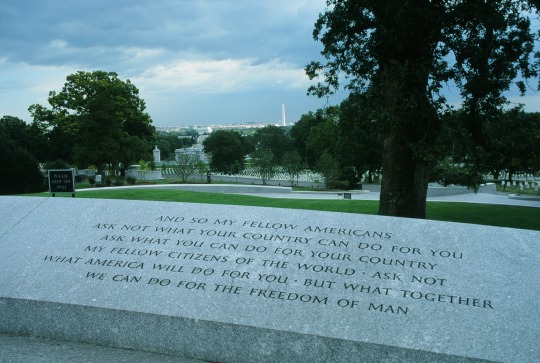
Actually, you travel to discover new or foreign things. But sometimes you find yourself in the process. But one thing at a time.
I called my professor in the summer of 1993 just to make an appointment to submit my thesis. Shortly thereafter, I was employed at his technology transfer center. The federal state of Baden-Württemberg in Germany initiated many such transfer centers in order to transfer newly developed technology from universities to industry. I worked in a group of Engineers in a flat hierachy (beyond my boss there was only an assistant) and quite independently according to an annual working time model. When we reached 1,600 working hours, our obligation was fulfilled. We were able to do whatever we wanted with the overtime: take the time off, have it paid out or take it into the coming year. I used my accumulated overtime to travel for over 3 months with a backpack through my dream country at the time: the USA.
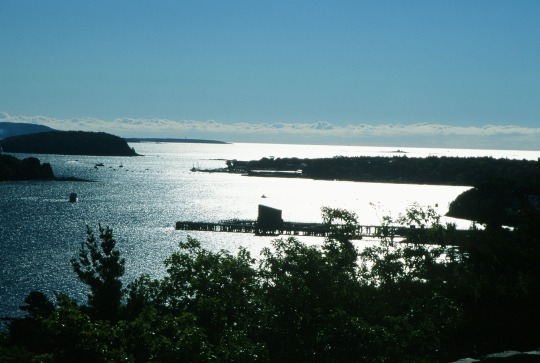
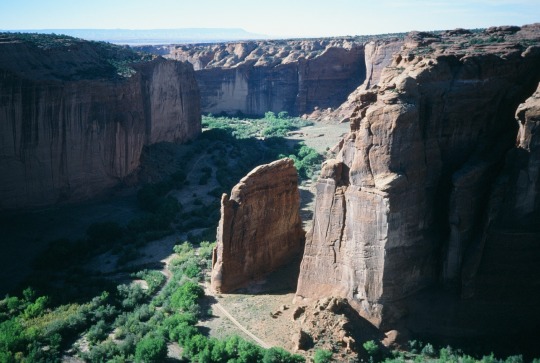
I originally wanted to travel with my best friend - but when a professional opportunity came up for him, he unfortunately dropped out. The same applied to a colleague who wanted to step in at short notice. So in the end I was left alone with my dream - and it was the best thing that could have happened to me.
When you travel alone, you are more sociable. You also always meet like-minded people in youth hostels, which I preferred for budget reasons. Nevertheless, especially in the western United States, I often found myself not speaking to anyone for days. I listened to a lot of US radio - but also noticed that in solitude you perceive your surroundings much more intensely. You are constantly thinking and reflecting on what your senses absorb. The moments leave a deeper impression on your consciousness - but above all, you don't talk such moments to death with someone else.

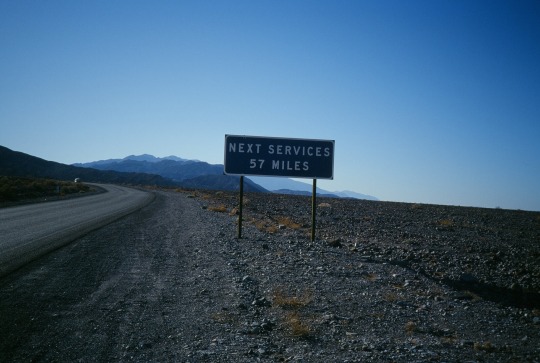
Although I had already traveled alone across half of Europe via Interrail, this trip was surely in a different category in terms of duration, distance traveled and planning effort. Booking portals, various informations on the Internet and mobile phones which make traveling easy today, didn‘t exist in 1996. It makes you braver when you realize that even if there are difficulties, you can always find a solution or someone who will help you in a friendly manner. For instance, I had to change a wheel for the first time in my life after a flat tire. And I certainly wouldn't have had many of the encounters at home which I had in the US. Not only because it's easy to approach Americans, but also because I was more open-minded as a traveler myself. And encounters rounded off this journey:
I met Bob in the youth hostel in Port Townsend on the Olympic Peninsula in Washington State. We had a nice conversation with a bald Australian who traveled the world and supported himself by writing guidebooks. Bob and I decided to visit Olympic National Park together over the next few days. This developed into a pen pal friendship that lasted for years and led to various meetings.
I briefly spoke to the Korean Pilho for the first time at the train station in Buffalo. I later met him again by chance in the youth hostel in San Francisco. We visited Berkeley together and also started a pen pal relationship. He studied in San Francisco for a year - before he returned to his homeland. Years later I met him and his beautiful Thai wife again in Tokyo - where he continued to study at Waseda University for a few more years. I heard the term “globalization” from him for the first time - because he dealt intensively with the topic.
There were many short and long encounters with simple exchanges about lifestyles up to deep philosophical and scientific discussions that even opened doors to new ways of thinking. But most of all, this trip grounded me again. After the trip I rested within myself. My inner state felt like this landscape:

Tuolumne Meadows in Yosemite National Park - source: Wikipedia, Steve Dunleavy (Lake Tahoe, NV, USA)
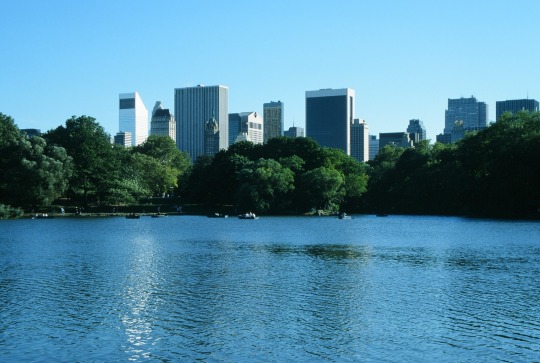
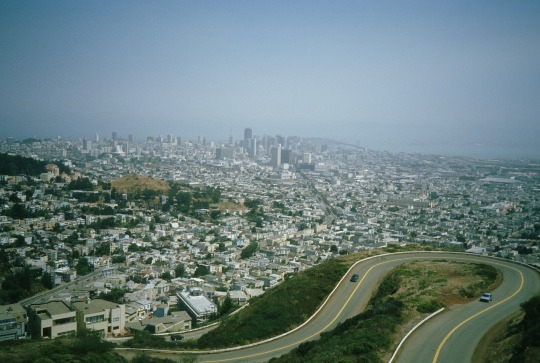
I visited most states in the USA, spent in total over 6 months there on 5 trips and fell in love with the country and its people. I made friends there and, through my wife, I now even have relatives who live there and are US citizens. If I had been offered a job there 30 years ago, I would probably have emigrated. I dress very American and follow American news regularly. But the more I traveled overall, the more I learned to appreciate my own country (Germany). The psyche of the USA has also developed more negatively in the last 20 years - and these days I am quite critical of American politics. I now know that I already live in the best place for me - and there I will probably die some day.
Note: For more photos about my US trips - refer to my side blog „play-of-colors“.
#traveling#usa#find yourself#know yourself#create yourself#solitude#peace of mind#lightness of being#insights#self awareness#self development
0 notes
Text
The Best 5 Day Backpacking Trips: Discovering Nature's Wonders

Embarking on a backpacking trip is a fantastic way to reconnect with nature, challenge yourself, and experience the great outdoors in a truly immersive way. For those looking to make the most of a short but impactful adventure, here are the best 5-day backpacking trips that will leave you with unforgettable memories.
1. Inca Trail to Machu Picchu, Peru
One of the world's most iconic treks, the Inca Trail to Machu Picchu offers a perfect blend of historical intrigue and stunning scenery. Over the course of five days, you'll traverse ancient paths, encounter archaeological sites, and witness breathtaking views of the Andes. The trail culminates at the magnificent Machu Picchu, a UNESCO World Heritage site that never fails to amaze. We provide guided tours that ensure you experience the trail's full beauty, with knowledgeable guides and well-planned itineraries.
2. John Muir Trail, California, USA
The John Muir Trail, named after the famous naturalist, takes you through some of California's most beautiful wilderness areas, including Yosemite, Kings Canyon, and Sequoia National Parks. This 5-day segment of the trail offers a challenging yet rewarding adventure, with stunning vistas, alpine lakes, and diverse wildlife. It's an ideal choice for those seeking solitude and a deep connection with nature. Be sure to prepare for high-altitude hiking and bring all necessary gear.
3. Torres del Paine W Trek, Chile
The Torres del Paine W Trek in Patagonia is a must for any backpacking enthusiast. This 5-day trek takes you through the heart of Torres del Paine National Park, offering dramatic landscapes featuring granite towers, turquoise lakes, and sprawling glaciers. The trail's name comes from the "W" shape formed by the route, which allows you to explore the park's main valleys. We can arrange logistics and support to help you navigate this remote and rugged terrain.

4. Laugavegur Trail, Iceland
Iceland's Laugavegur Trail is famous for its otherworldly landscapes, from vibrant geothermal areas to vast glaciers and colorful rhyolite mountains. This 5-day trek offers a unique experience of Iceland's natural beauty, including the hot springs of Landmannalaugar, the black sand deserts of Mælifellssandur, and the lush Thórsmörk valley. Each day brings new and strikingly different scenery, making this one of the best 5-day backpacking trips for adventurers seeking a truly varied landscape.
5. West Highland Way, Scotland
Scotland's West Highland Way offers a captivating journey through the Highlands, from the outskirts of Glasgow to the town of Fort William. This 5-day trek features picturesque lochs, rolling hills, and the majestic Ben Nevis, the UK's highest peak. Along the way, you'll encounter charming villages and historic sites, providing a rich cultural experience alongside the natural beauty. The trail is well-marked and suitable for hikers of all levels.
Conclusion
These best 5-day backpacking trips offer something for everyone, from the lush valleys of Iceland to the ancient paths of the Inca Trail. Each of these trails provides a unique adventure, ensuring that you'll return home with a renewed spirit and a sense of accomplishment. Whether you're a seasoned hiker or a novice explorer, these trips are sure to inspire and challenge you.
For those looking to make their journey even more seamless, Alpaca Expeditions offers expert guidance and support on several of these trails, ensuring you have a safe and memorable experience. So, pack your gear, lace up your boots, and get ready to embark on the adventure of a lifetime!
#best 5 day backpacking trips#trips to peru all inclusive#luxury peru travel#tours from lima to machu picchu#tours machupicchu#travel leaders travel agency
0 notes
Text
Exploring the Best Backpacking Trails in the United States
Backpacking enthusiasts are always on the lookout for new adventures, and the United States offers a plethora of stunning trails that cater to every level of backpacker. From rugged mountain ranges to lush forests and coastal wonders, Best Backpacking Places in US the US is a treasure trove of backpacking destinations waiting to be explored. If you're planning your next backpacking trip and seeking inspiration, here are some of the best backpacking places in the US that are sure to leave you in awe.
Appalachian Trail, East Coast: Stretching over 2,000 miles from Georgia to Maine, the Appalachian Trail is a mecca for backpackers seeking a long-distance adventure. Traversing through picturesque landscapes, including dense forests, rolling hills, and panoramic vistas, this trail offers a diverse range of experiences for backpackers of all skill levels.
Pacific Crest Trail, West Coast: Spanning from California to Washington, the Pacific Crest Trail is another iconic long-distance trail that attracts backpackers from around the world. With its breathtaking views of the Sierra Nevada, Cascade Range, and Pacific coastline, this trail promises an unforgettable journey through some of the most stunning wilderness areas in the US.
Yosemite National Park, California: Renowned for its majestic granite cliffs, cascading waterfalls, and pristine wilderness, Yosemite National Park is a paradise for backpackers. Whether you're exploring the iconic Yosemite Valley or embarking on a multi-day trek through the backcountry, this park offers a range of backpacking options for nature lovers.
Grand Canyon, Arizona: The Grand Canyon is a natural wonder that beckons adventurers to explore its rugged terrain and ancient landscapes. Backpackers can choose from a variety of trails, including the challenging Rim-to-Rim hike or the less-traveled North Rim trails, each offering breathtaking views of the canyon's depths and colors.
Rocky Mountain National Park, Colorado: For backpackers seeking high-altitude adventures, Rocky Mountain National Park is an ideal destination. With its towering peaks, alpine lakes, and abundant wildlife, this park offers a rugged yet rewarding backpacking experience amidst the beauty of the Rocky Mountains.
Olympic National Park, Washington: Home to diverse ecosystems ranging from lush rainforests to rugged coastlines, Olympic National Park is a playground for backpackers seeking adventure. Explore the Hoh Rainforest, trek along the Olympic Coast, or summit the majestic peaks of the Olympic Mountains for an unforgettable backpacking experience.
Great Smoky Mountains National Park, Tennessee/North Carolina: The Great Smoky Mountains National Park offers a mix of scenic beauty, rich biodiversity, and Appalachian culture. Backpackers can explore a network of trails that lead to waterfalls, panoramic viewpoints, and historic sites, immersing themselves in the beauty of this iconic mountain range.
Zion National Park, Utah: Known for its towering sandstone cliffs and narrow slot canyons, Zion National Park is a paradise for adventurous backpackers. Hike the famous Narrows, conquer Angels Landing, or embark on a multi-day trek through the park's wilderness for an adrenaline-pumping backpacking experience.
Glacier National Park, Montana: Glacier National Park is a haven for backpackers seeking pristine wilderness and stunning alpine scenery. With over 700 miles of trails, backpackers can explore glacial lakes, rugged peaks, and abundant wildlife, making it a must-visit destination for outdoor enthusiasts.
Denali National Park, Alaska: For those seeking a true wilderness experience, Denali National Park offers unmatched beauty and adventure. Backpackers can venture into the heart of the Alaska Range, marvel at Mount McKinley (Denali), and encounter wildlife such as grizzly bears and caribou in their natural habitat.
Whether you're a seasoned backpacker looking for a new challenge or a beginner eager to explore the great outdoors, the United States has a diverse range of backpacking trails that cater to every adventurer's dream. Best Backpacking Places in US From the iconic Appalachian Trail to the rugged beauty of Denali National Park, these destinations promise unforgettable experiences and memories that will last a lifetime.
0 notes
Text
Find the ultimate Backpacking guide for beginners at TheEagerTraveler.com. Whether you're setting off on your first adventure or seeking expert tips, our comprehensive resources and insights will make your journey unforgettable. Kickstart your adventure today and explore the world with confidence!
#world travel guide#backpacking southeast asia#backpacking trip in yosemite#europe travel blog#travel destinations#best travel blogs#california adventure tips#backpacking guide for beginners#thailand travel guide#destination guide carmel#destination guide santa maria valley#adventure travel blogs#female travel bloggers
0 notes
Text
Theodore Solomons -- A Father of the JMT (Part 1)
Excerpted from Michael Hoberman, "Jews in the Wilderness"
This post focuses on the role that Theodore Solomons’ played in the shaping of the nation’s best-loved and most spectacular long-distance footpath, the John Muir Trail. For those readers intrigued by the early history of the JMT, I would refer you to a chapter in The Pacific Crest Trailside Reader: California (2011) written by Solomons in 1940, "The Beginnings of the John Muir Trail."
On July 12, 1895, Theodore Seixas Solomons and his friend Ernest Bonner left Jackass Meadows, a camp 100 miles northeast of Fresno, for an exploratory excursion through California’s Sierra Nevada range. The two men wore felt hats, layered wool shirts, and “shoes with slightly projecting hob-nailed soles.” Their canvas backpacks brimmed with the latest innovations in outdoor equipment: eider down quilts that each weighed four pounds, kola nuts (for headache relief), extra buckskin straps, and 60 pounds’ worth of “ham, canned salmon and corned-beef, flour, white corn-meal, oatmeal, and hominy.” As Solomons recounted a few months later, they were on their way to an area that had been “represented on the map by blank spaces drawn in such a way as to indicate that the topography thus indicated was mythical.”

Bonner & Solomons, King’s River Canyon, Sierra Nevada photographs / Taken by Theodore Seixas Solomons
Theodore Solomons knew what he was doing, even when he didn’t know exactly where he was going. Late in his life, Solomons recounted that the dream of walking the length of the High Sierra had first come to him in the summer of 1884 (a year after his bar mitzvah) while he was out “herding [his] uncle’s cattle in an immense unfenced alfalfa field.” In an essay that he published in the February 1940 edition of The Sierra Club Bulletin, he tried to recapture the moment in which it had come to him. “The Holsteins were quietly feeding,” he wrote, “and I sat on my unsaddled bronco facing east and gazing in utter fascination at the most beautiful and the most mysterious sight I had ever seen.” Mesmerized by the “flashing teeth of the Sierra crest,” Solomons projected himself eastward and upward: “I could see myself in the immensity of that uplifted world, an atom moving along just below the white, crawling from one to the other end of that horizon of high enchantment.”
When Solomons reached the age of 18, with no educational or career goal otherwise occupying or distracting him from his love of the mountains, he made his first trip to Lake Tahoe. His family was hardly thrilled at this fairly unconventional choice of pastime. By the early 1890s, however, his father had died, his siblings had already launched their careers, and his mother, Hannah Marks Solomons had made her peace with his quirky interests. While the family had once known and would eventually regain financial prominence, the period of Solomons’ early manhood coincided with a decade long downturn in their fortunes. Theodore funded most of his youthful mountain ventures through extended stints as a court stenographer.
By the time that he and Ernest Bonner were preparing for their July 1895 expedition, Solomons had spent the better part of three summers hiking through (and, on a few occasions, barely surviving) the rigors of the Sierras. He had thoroughly explored Yosemite’s Tuolumne Valley and had also ventured southward from there to the lesser-known area surrounding Mount Ritter, Banner Peak, and the Minarets (all three mountains now comprise a large portion of the Ansel Adams Wilderness). He had bagged peaks, glissaded down glaciers, subsisted for days at a stretch on berries and mule meat, and been pre-hypothermic more times than he could count. On most of these trips, he, his friends, and his pack animals lugged a large camera, tripod, and several pounds’ worth of glass plates along with them. The archives at Berkeley’s Bancroft Library contain 250 of Solomons’ photographs of the Sierras, all of which he took between 1892 and 1896.
Solomons was also well acquainted with the Sierras’ most famous personalities. John Muir was a generous, if occasionally stern, mentor. Muir’s contributions to Solomons’ knowledge of the Sierras, however, were of a decidedly inspirational, as opposed to practical nature. In a 1935 article, Solomons described Muir as “exceedingly generous” and especially solicitous of “young mountaineers” like himself. At the same time, he judged Muir, “by the standards of the geographic world,” to be “a very poor sort of explorer.” Well past his youth, Muir had been fearless in his forays into the wilderness and indefatigable in his efforts to preserve it. While “he could aptly describe every place he had seen,” Solomons wrote, “you could seldom tell where it was, for he seldom oriented himself in his excursions.”
Solomons’ travel companions belonged to an eclectic group that included fellow Sierra pioneers “Little” Joe LeConte and Will Colby, as well as Leigh Bierce. On one memorable occasion he accompanied a group of four Cal-Berkeley “bloomer girls” on their ascent of Yosemite’s 13,000-foot Mount Lyell. The trip concluded with an exhilarating mile-a-minute glissade down a glacier that it had taken them several hours to climb.
The friend he chose to accompany him on his 1895 trip, Ernest Bonner, was a Berkeley law school associate of Solomons’ brother Leon. On his trips into the Sierra backcountry Solomons also regularly visited and consulted with the Portuguese and Basque sheepherders who brought their flocks to graze in its alpine meadows. His privileged childhood and adolescence in the San Francisco area could have ushered him into an easeful professional or business career. Instead of adhering to that path, Solomons cast his lot with people who shared his enthusiasm for and familiarity with the mountains.

Sources of Middle Fork, San Joaquin River, Sierra Nevada photographs / Taken by Theodore Seixas Solomons,
Solomons and Bonner came as close to locating the pass as anyone would in the succeeding dozen years, and had it not been for an early season snowstorm that drove them off the peak of 13,558-foot Mount Goddard on July 17, they would almost certainly have found it. In his 1896 report on the trip with Bonner, Solomons described the desperate situation whose onset prevented their triumph: “I had never passed a night at a higher altitude than this,” he wrote, “nor do I care to.” Huddled in the relative shelter of a tamarack grove, the two men managed to get a lifesaving fire going thanks to some “pitch saturated logs.” On the following day, trying their best to maintain the crest of the divide “in a blinding storm” for several hours, they held a course toward the still-hypothetical pass for as long as they could before seeking shelter in “a deep gorge that had captured [their] admiration and curiosity” the previous day from the steep slope of Mount Goddard. Before they made their descent, Solomons had formed as precise an idea of where the pass had to be as anyone could have. “From several heights,” he wrote in 1940, he “could see that at the head of the basin was an easily accessible gap or pass to the highest Middle Fork streams of Kings River.” On the map that he drew immediately following his 1895 trip with Bonner he went so far as to demarcate its approximate location.
Solomons’ and Bonner’s inability to cross over what is known as the Goddard Divide in the summer of 1895 was a temporary, if frustrating, setback to the development of the John Muir Trail. It was also one of several factors that seem to have cost Solomons the recognition he surely deserved—and had already more or less earned—for having been the path’s founder. “Had they not panicked,” speculated one late-20th-century Sierra mountaineer, Solomons and Bonner would most certainly have gotten to the pass. Thanks to Solomons’ thorough documentation of his 1895 trip, his friend and sometime hiking companion Joe LeConte managed to sight and then hike over the pass in 1908, thereby earning a place in the history books as the first person to travel the entire distance between Yosemite and the area around Mount Whitney. In the 1930s, trail builders erected Muir Hut, the only edifice that lies along the 212-mile length of the John Muir Trail, at the 11,980-foot summit of the pass.
When Theodore Solomons died at the age of 79 in 1948, only a handful of his contemporaries acknowledged the role he had played in the trail’s creation. His 1940 Sierra Club Bulletin article had attempted to set the record straight by documenting everything from his 1884 gaze up at the Sierra crest from his uncle’s cattle farm, to his multiple trips through the 1890s (including the 1895 trip with Bonner) to his years of collaboration and correspondence with several other Sierra explorers. Solomons frankly admitted to the many setbacks he had faced along the way. During his lifetime, nothing that he had done or said earned him more than passing references in the Sierra Club’s official history of the trail’s development.
In 1965 veteran Air Force pilot, photographer, and Sierra Club member Hal Roth published a pictorial chronicle of the John Muir Trail called Pathway Through the Sky. The book included a chapter that summarized Solomons’ 1890s efforts to map out the trail. Two years later, the United States Geological Survey’s official designation of the 13,000-foot peak that hovers just to the south of Muir Pass as Mount Solomons helped to shore up the trail-maker’s legacy, at least among inquisitive map-readers. In 1974, Solomons was memorialized with a trail of his own, but even that act fell short of achieving its purpose of raising public consciousness about his contributions to wider knowledge of the High Sierra. The Theodore Solomons Trail is a rigorous 280-mile, lower-elevation alternative to the much more popular and well-known John Muir Trail. It receives comparatively little traffic, however, and, as a consequence, is often difficult to follow and inconsistently maintained. As one 2019 hiker put it, “If my experience is anything to go off of, almost no one knows about the bloody thing.” The same blogger claimed that when he called the Forest Service to request a hiking permit, he was told that they issue about three a year, as compared to the 1,500 or so that they provide to John Muir Trail hikers. To this day the story of the better-known trail’s pioneer remains mostly unknown, even to the hundreds of backpackers who complete its length each summer.
0 notes
Note
John Muir - Hero or Villain?
I'm probably less able to talk about the history of John Muir than you think I am. As with any historical figure, he's complicated. However, you can't deny that the entire modern conception of land conservation essentially originated from him, directly leading to the founding of the American NPS in his lifetime.
But he was a political figure. There's a huge tendency to kind of "naturewash" him, or make him more wholesome than what he actually was- a political activist and lobbyist of a kind. And his history with that is... Messy. He undoubtedly did a lot of good. But. He certainly had almost no regard for ethnic tensions, and took zero care in his advocacy for land preservation to ensure any indigenous rights in the process, which in turn led to some of the darker history of the NPS and US public lands around the turn of the century.
There are a lot of true, almost mythic moments from his life that have shaped history and helped gain reverence and respect for public lands. His initial entrance to Yosemite along what is now the JMT, and his backpacking trip with Teddy Roosevelt that directly led to the founding of the NPS come to mind.
But you CANT mythologize the actual people behind that, because you become blind to what are often complicated realities.
So yeah, neither. It probably feels very out of character for me to not completely hold Muir on a pedestal- I literally named myself after the mountain range he's most famous for exploring and fighting to protect- but that's really how you gotta be with most historical figures.
16 notes
·
View notes
Link
Check out this listing I just added to my Poshmark closet: Columbia Women's Sandy River™ Cargo Shorts - Khaki/Tusk - S.
0 notes
Text
11 Top-Rated Camping Tents for Every Budget
New Post has been published on https://eazycamping.net/11-top-rated-camping-tents-for-every-budget/
11 Top-Rated Camping Tents for Every Budget


Whether a rookie or a seasoned veteran, a camper has to have confidence in their tent. It’s your home away from home, and more so than any other piece of camping gear, it dictates how comfortable you’ll be. After all, no one wants to wake up wet or perhaps worse: covered in mosquito bites. Fortunately, tents, which were once mostly made of heavy canvas and pretty rudimentary, have gotten a lot more lightweight and technical in the past few decades. From Amazon to Ebay (although you may want to think twice about buying a secondhand tent), there’s never been a bigger selection to choose from starting at just $50. Whether you’re planning to backpack the PCT in the dead of winter or simply spend a summer weekend at a KOA with a pool and putt putt golf, here are 11 top-rated camping tents for every budget.

1. Coleman Sundome 2-Person Camping Tent, from $50, Amazon
With nearly 35,000 five-star ratings, the Coleman Sundome Camping Tent is ranked #1 on Amazon’s list of Best Sellers in Camping Tents. It’s the perfect entry level three-season tent for car campers looking for an affordable weatherproof tent. Despite how cheap it is, the frame is designed to withstand winds of 35+mph, and welded corners and inverted seams keep water out. “Last night, I had the opportunity to put my tent to the test during a heavy rainstorm, and I must say, I am incredibly impressed. Despite the non-stop downpour for nearly 5 hours, not a single drop of water made its way inside the tent,” writes one Amazon shopper whose review is titled “Passed the test.” The two-person model weighs 7.5 lbs., and it’s also available in three-person, four-person and six-person (all of which are under $100) models. Note: while it is the cheapest tent on this list, it also takes the longest time (10-15 minutes) to set up.

2. Clostnature Lightweight Backpacking Tent, from $67, Amazon
If you’re willing to spend a little more to shave off a couple of pounds, consider the Clostnature Lightweight Backpacking Tent which has more than 1,700 five star ratings and an impressive 4.6-star average rating. This two-person, three-season tent weighs 5.7 lbs and is designed to be pitched in a pinch, even by just one person. “I came across it during a solo camping trip in Yosemite, and it blew me away with its superior construction and weatherproofing,” says Mal Hellyer, a travel blogger who has camped everywhere from the Alps to the Australian Outback. “It stood strong during an unexpected thunderstorm and kept me dry, a crucial factor when you’re miles away from civilization.”

3. CORE 9-Person Tent, $100, Amazon
Whether you have a big family or your kids are begging to bring their friends, you’ll have plenty of room for everyone in this three-season, nine-person tent with nearly 4,000 five-star ratings on Amazon (where it’s currently 33% off). With a whopping 144 square feet of space, the CORE 9-Person Tent easily fits three queen air mattresses. Although it’s an entry-level tent, it is water-resistant and it features a handy gear loft with plenty of pockets and a hook for your flashlight or lantern. It also weighs just 18.5 pounds which is remarkable given how big it is, and if it’s not big enough, don’t worry. There’s an 11-Person model (for $130) with 162 square feet of space!
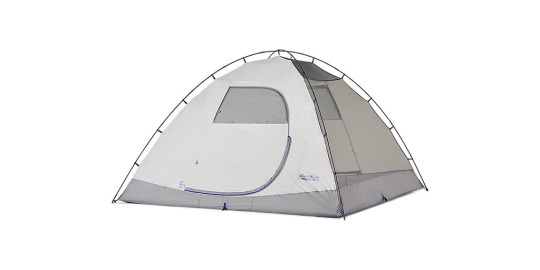
4. Eddie Bauer Carbon River 4, $126 (originally $179), Eddie Bauer
If you’re looking for a bargain, consider the Eddie Bauer Carbon River 4 which is currently 30% off. This popular four-person, three-season tent weighs 10 pounds and offers 64 square feet of interior space. Like all Eddie Bauer gear, it’s designed to last for years, and it’s also very user-friendly. Pieces are even color-coded for easy setup. The double-wall construction is durable, and thanks to Eddie Bauer’s signature WeatherEdge technology, it’s fully waterproof. In addition to featuring a polyurethane coating that keeps water out, the tent is also treated with a flame retardant.
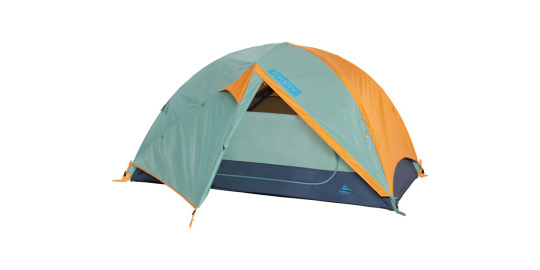
5. Kelty Wireless 4-Person Tent, $150 (originally $200), Amazon
One step up from entry level, the Kelty Wireless 4-Person Tent is a great option for car campers who want something reliable. It’s not called wireless because it doesn’t feature wires. It’s called wireless because cell phone reception and WiFi aren’t included. Still, this four-person, three-season tent does boast doors on either side and two vestibules for maximum dry storage. It has a 4.6-star average rating on Amazon where it’s currently 25% off. “The four person model is large and spacious due to the spreader bar at the top. Easy to set up for one person,” writes one shopper who opted for Kelty because her last tent, which she bought in 1977, lasted so long. It weighs just under 12 pounds and offers 59 square feet of interior space.

6. Quechua Two-Second Waterproof Pop-Up Tent, $229, Decathlon
It’s hard to find a tent that you can set up faster than the aptly-named Quechua Two-Second Waterproof Pop-Up Tent. This three-season, two-person tent doesn’t discriminate against tall campers, it’s ideal for people up to 6’8, and it’s great for people who run hot. The tent’s “Fresh Technology” feature reflects the sun’s rays to keep you cool even in the hottest temperatures. But what really sets this bestseller (it has a 4.5-star rating from more than 1,100 reviews) apart is its patented Black Out technology promising 99% darkness at any time of the day. It weighs 10.4 pounds and is built to withstand wind gusts of up to 30 mph.
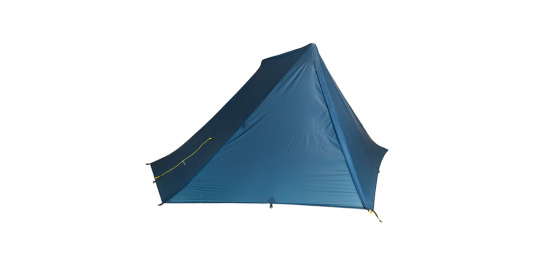
7. Outdoor Vitals One-Person Trekking Pole Backpacking Tent, $290, Outdoor Vitals
Weighing about as much as a pair of shoes, the Outdoor Vitals One-Person Trekking Pole Backpacking Tent is perhaps the lightest tent money can buy. Despite weighing less than two pounds, this one-person, four-season tent is made of an uber durable nylon and has multiple “storm points” and extra-long stake lines that give you serious peace of mind even in the harshest of conditions. “I had it out in a pretty big thunderstorm, and had no issues with the rain and wind,” writes one reviewer. “The tent sets up quickly, it has plenty of room for one person, and the material seems like it is very durable. I think this is going to become my go-to tent for ultralight backpacking!” The inside has a mesh pocket and two hanging loops, but with just 17 square feet of space it may not be the tent for you if you’re claustrophobic.

8. NEMO Aurora 2-Person Backpacking Tent and Footprint, $299, NEMO
If you’re looking for a lightweight two-person backpacking tent, look no further than the Nemo Aurora. This three-season tent, which comes with NEMO’s lifetime warranty, weighs just over five pounds and has 31.8 square feet of space. And because it comes with NEMO’s signature Pawprints, which protects the footprint of the tent and provides insulation, it’s perhaps the most dog-friendly tent on this list. Another fun feature is the overhead light pockets which utilize a “light-diffusing fabric to cast an even glow.”

9. Big Agnes Copper Spur HV UL2, $413 (originally $550), Moosejaw
Thousands of campers swear by the three-season best-seller that is the Big Agnes Copper Spur HV UL2. On Moosejaw alone it has an impressive 4.7-star average rating from 750 reviews. At just over three pounds and 29 square feet, it’s a nice compromise between an ultralight backpacking tent and a lightweight tent. Features include two doors, two awning-style vestibules, a new TipLock Tent Buckle (which makes setting it up a breeze) and 100% waterproof seams. “I took it out for a two-week backpacking trip in the mountains of Peru, and it handled the wind, rain and even snow with no issues,” says Charles Breitbart, a travel blogger and avid camper.

10. Mountain Hardwear Bridger 6 Tent, $950, Mountain Hardwear
In terms of storage, it’s hard to beat the Mountain Hardwear Bridger 6 Tent. This six-person, three-season tent has eight interior pockets, a removable gear loft and two full-size vestibules where you can stash your gear so it doesn’t get covered in dew, or worse. Designed to function as your base camp for outdoor pursuits, the Bridger 6, which weighs about 24 pounds, has handy features including two saloon-style doors, a built-in doormat and a full coverage fly. With 89 square feet of interior space and another 94 square feet of vestibule space, it can comfortably fit six.
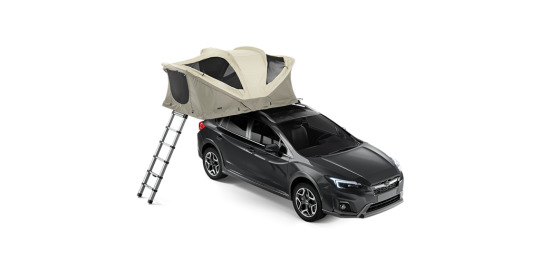
11. Thule Approach, $2,300, Thule
While it’s easily the most expensive and heaviest (110 pounds) tent on this list, the Thule Approach is also the most comfortable and it can be used in all four seasons. This rooftop abode even comes with a dual layer mattress. It’s available in three sizes, and all of them boast a panoramic roof with skylights, lockable mounting brackets and a removable rain cover with three different modes. While it looks complex, after all it involves a ladder, it can be unpacked and set up in just three minutes.

Katie Jackson is a writer and media specialist based in Montana’s Big Sky Country. Living and working everywhere from New York to Nicaragua, Katie is no stranger to adventure. When she’s not traveling the world (or writing about it!) she’s busy chasing after a Leonberger named Zeus. Follow Katie’s travels on Instagram @katietalkstravel.
0 notes
Link
Backpacker lost in Yosemite National Park Yosemite National Park officials have l... #movie quote #movies #movie line #movie line #movie scenes #cinema #movie stills #film quotes #film edit #vintage #movie scenes #love quotes #life quotes #positive quotes #vintage #retro #quote #quotes #sayings #cinematography
0 notes
Text
Traveling Off-the-Grid: How Foldable Solar Panels Can Provide Sustainable Energy on Remote Trips
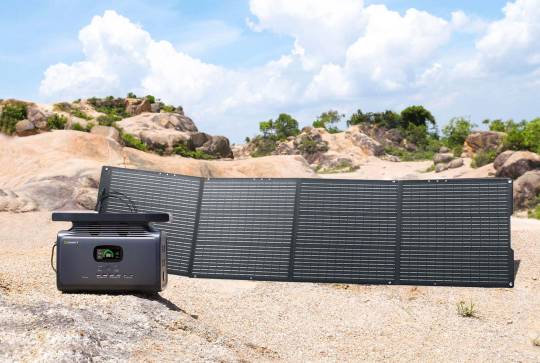
Introduction
As the world becomes increasingly interconnected, more and more people are looking for opportunities to get away from it all and experience the beauty and solitude of nature. Yet, even in the most remote locations, we still need access to energy - to power our devices, cook our food, and provide light at night. Fortunately, with the advent of foldable solar panels, traveling off-the-grid has become easier and more sustainable than ever before.
The Benefits of Foldable Solar Panels
Subtitle: Why foldable solar panels are the perfect solution for remote trips
Lightweight and portable - can be easily carried in a backpack
Durable and weather-resistant - can withstand harsh outdoor conditions
No need for fuel or batteries - runs on clean, renewable energy
Can charge multiple devices at once - from smartphones to laptops to camping stoves
Reduce carbon footprint - by using clean energy, you can minimize your impact on the environment
How Foldable Solar Panels Work
Subtitle: The science behind foldable solar panels
Foldable solar panels use photovoltaic cells to convert sunlight into electricity. These cells are made of silicon, which releases electrons when it is exposed to sunlight. The electrons are then captured by wires and sent to a battery or other device. Foldable solar panels are designed to be flexible, so that they can be folded or rolled up for easy storage and transportation.
How to Choose the Right Foldable Solar Panel
Subtitle: Factors to consider when purchasing a foldable solar panel
Power output - how much electricity can the panel generate?
Size and weight - how easily can the panel be carried?
Durability - is the panel able to withstand weather and wear?
Price - what is the panel's cost compared to other options?
Additional features - does the panel have USB ports? Can it charge multiple devices at once?
Case Study: How Foldable Solar Panels Helped Save a National Park
Subtitle: A real-world example of the impact of foldable solar panels
In 2017, a massive wildfire broke out in Yosemite National Park, threatening to destroy thousands of acres of wilderness and wildlife. In order to maintain communications during the crisis, park rangers relied on foldable solar panels to keep their radios and cell phones charged. Without access to traditional sources of energy, the foldable solar panels provided a crucial lifeline for park rangers and emergency officials, helping them to coordinate their response and ultimately save the park from devastation.
Conclusion
Subtitle: Why foldable solar panels are the future of sustainable energy
As more people look to disconnect from the modern world and immerse themselves in nature, foldable solar panels provide a reliable and sustainable solution for accessing energy in remote locations. By harnessing the power of the sun, we can reduce our reliance on fossil fuels and do our part to protect the planet. Whether you're camping in the woods or exploring a new country, foldable solar panels are the perfect companion for any off-the-grid adventure.
Article written by "None".
0 notes